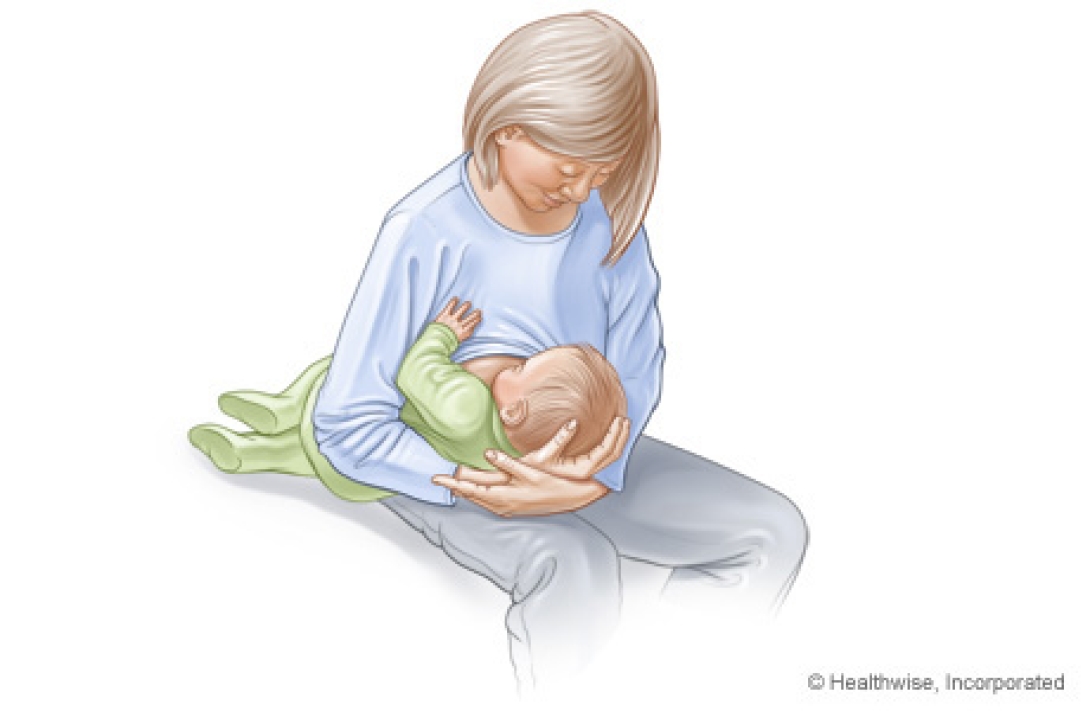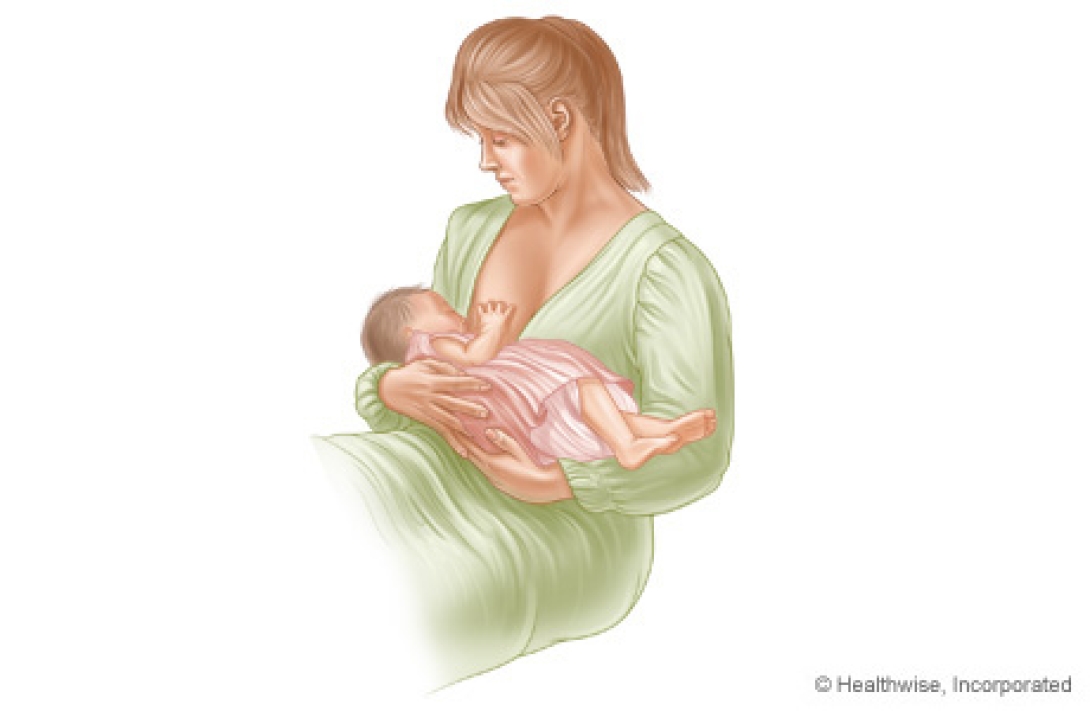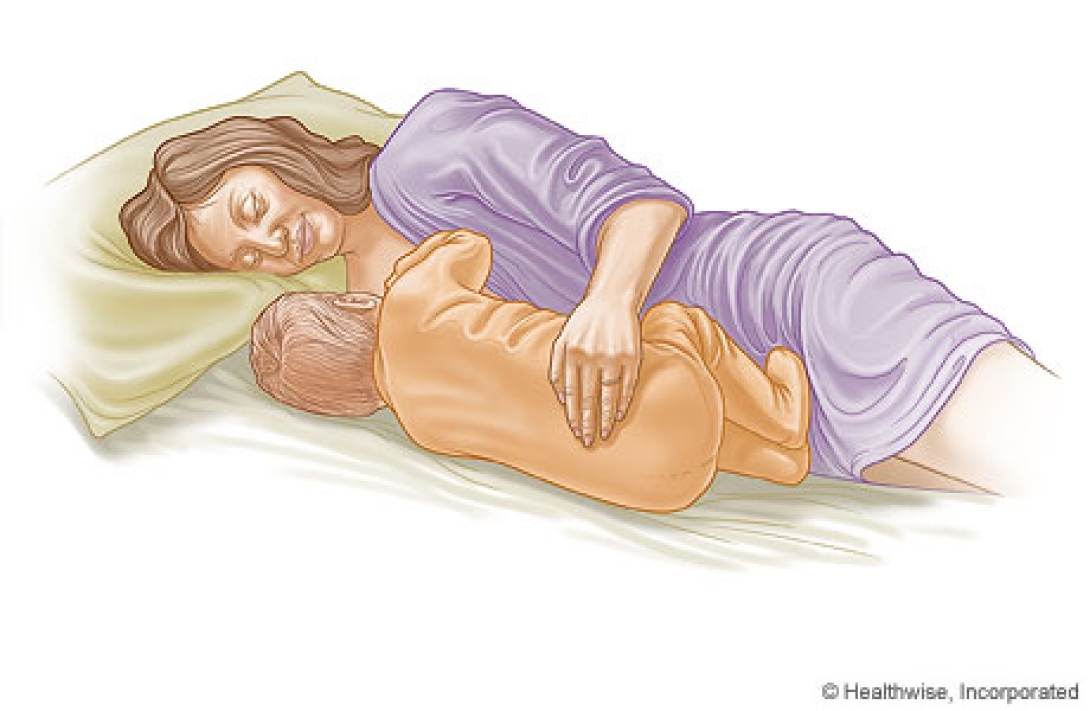A Michigan Medicine lactation consultant describes the most common breastfeeding positions that can help improve your baby’s latch.
9:00 AM
Author |
This article was part of a short, month long Michigan Medicine Health blog series called #MommyMonday. From moms and dads to anyone who cares for an infant, check out other posts from this series like how to properly store breast milk and formula, what to know about mastitis, and what one patient's personal breastfeeding experience taught her.
Breastfeeding positions that are comfortable for both you and your little one can help with latching issues and make the breastfeeding experience much more enjoyable. Being in a comfortable and relaxed position also aids in let-down, the reflex that causes milk to flow when mom is ready to breastfeed.
Although one position might work well, frequently changing positions can help in preventing blocked ducts, according to Michigan Medicine lactation consultant Carrie Pawlowski, RN.
Regardless of the position, Pawlowski says it's important to follow these breastfeeding tips:
-
Bring the baby to you—not you to the baby. Constantly bending over can lead to back and neck issues.
-
Keep your baby's body and head aligned. The child's head shouldn't be turned to one side or tilted up or down while breastfeeding.
-
Use pillows to support your arms and the baby, which will help make you both more comfortable.
Beyond two of the most common breastfeeding positions, which are featured in the video above, below are three other positions Pawlowski recommends. At your next feeding, try out one of these expert-approved options:
1. The Football Hold

Since the baby doesn't rest on the abdomen in this position, this is a great option for moms with large breasts or who have had a c-section.
To get started, take your dominant hand and go behind the baby's head, placing your thumb on one of the baby's ears and your index finger on the other. Then hold your breast with the other hand and lift it so that the nipple is leveled with your baby's nose.
Rub the child's lip with your nipple and as soon as the baby opens their mouth, bring him or her in towards you, making sure they latch onto the areola (the dark circle around the nipple).
While using this position, a pillow can come in handy for some extra support.
2. The Cross-Cradle Hold

The cross cradle hold gives you more control in moving your baby while also providing head support. Pawlowski adds to be aware that in this position the child's abdomen will lie against yours, and that can be uncomfortable for some mothers.
To begin, hold the baby across your lap, and using your dominant hand, hold the breast and bring the baby's nose to your nipple.
Rub the baby's lip with your nipple and as soon as he or she opens their mouth, bring the baby in towards you and make sure they latch to the areola again. This shouldn't cause any pain.
After the baby latches, you can take the hand that was holding your breast and relax it under the baby or you can keep your hand on your breast to compress it, which can aid in milk flow.
WATCH: What foods can help increase or decrease your breast milk supply?
3. Cradle Hold

In this traditional hold, since the baby's abdomen will lie against yours, it may be a more comfortable option for those who delivered vaginally.
Although common, Pawlowski notes it doesn't offer the same amount of control as other positions, and recommends this option for mothers who have had more experience breastfeeding.
To get started, sit with your back supported, with one arm under the baby and the other behind the baby's bottom or back. The baby's head should be in the bend of your elbow and your other hand should be free to guide your breast into the baby's mouth to aid in latching.
4. Side-Lying Position

A perfect position for when you're tired; which is the case for most new moms! This is also a good option if you had a c-section, since it allows you to feed on your side.
Begin by lying on your side, positioning your baby similarly so that your chests face each other. Your top hand will support your lower breast and help to guide it to your baby for latching. After successfully latching to the areola, you can use this arm to cuddle your baby and bring them closer to you.
Expert tip: Pawlowski recommends placing a pillow underneath your baby to help provide support, which can be helpful for very large or small-breasted women to see their baby more easily.
5. Australian Hold

In this position, your baby is held vertically, with their legs straddling your thigh and facing your breast. Your knee, as opposed to hand, is supporting the baby's bottom.
Put one hand low on the baby's head to give control and the other, on the same side as the breast being used, to support your breast and help the baby form a good latch.
Latching may also be more successful if your baby sits slightly side-saddled.
These recommendations are provided and medically reviewed by Healthwise staff.

Explore a variety of health care news & stories by visiting the Health Lab home page for more articles.

Department of Communication at Michigan Medicine
Want top health & research news weekly? Sign up for Health Lab’s newsletters today!





